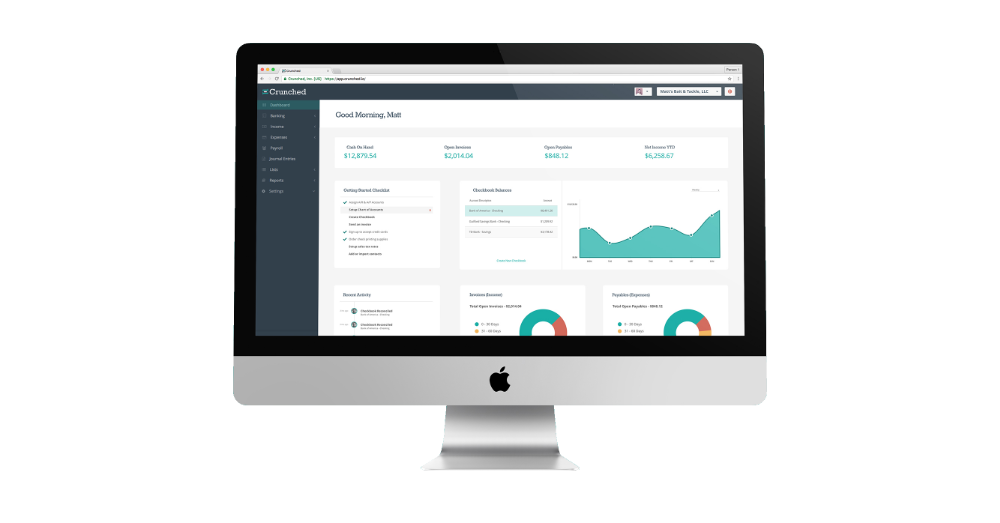Understanding The 4 Basic Accounting Reports
By Matt Reims
Maintaining sound accounting reports is a critical part of being a small business owner. If you’re not already doing so, it’s never a bad time to jump in and take control of your finances. Managing these reports on a regular basis will help ensure that your business is fiscally healthy. They do so by helping you understand where the business stands financially on a consistent basis. When considering the accounting fundamentals of a small business, take a look at these four basic accounting reports:
• Income statement
• Balance sheet
• Cash flow statement
• Statement of retained earnings
Each accounting report serves a different purpose. Reports help you understand how much you’re earning versus how much you’re spending. They also show you how much equity you currently have in your business, among other critical accounting information.
Here is a breakdown of the four basic accounting reports, and how you can use them to keep an eye on your business’s financial health and current standing.
Balance Sheet
Your company’s balance sheet is a snapshot of your assets and liabilities. The difference between the two lets you know how much equity you have in your small business.
The assets column on your balance sheet displays what you own. Potential assets are things like cash, company vehicles, furniture, and/or office equipment. Your assets can fall into a couple of different categories: “Current” assets are ones you can turn into cash relatively quickly; “fixed” assets, meanwhile, are purchases made for long-term use. These assets are not easily converted to cash quickly. Fixed assets include items like large and/or specialized equipment, land, and real estate.
Liabilities, on the other hand, can be defined as money that needs to be paid out to other entities. This includes your staff’s salaries, taxes to the IRS, bank loans, and/or unpaid bills. Any of these debts should fall under your balance sheet’s liabilities section.
After assets and liabilities are figured out, your balance sheet will reveal “equity,” which can vary depending on your company structure. If you are a sole proprietor, your balance sheet will contain “owner’s equity” and “draw account” sections. The “draw account” will record withdrawals you make from your business.
Income Statement
Your income statement is a record that shows revenue, expenses, and profits or losses during a given period of time (month, quarter, etc.). The income statement could be considered the most crucial accounting report because it reveals the business’s operational results clearly: how much money is your business bringing in and how much is going out.
An income statement is generally broken up into three categories: sales (services or products sold); operating expenses (office rent, advertising budget); and non-operational expenses (interest paid on a business loan). With a single-step income statement, gross income is calculated by subtracting materials and production from the sales total. Multi-step income statements look at four major profitability measures: gross income, operating income, and pre- and post-tax income.
Cash Flow Sheet
A cash flow statement shares some similarities with income statements. This is an accounting report that shows how much money goes in and out of your business during a specific period of time. The difference with this report is that it accounts solely for how much money was received and spent. An income statement goes a little deeper; it shows the business’s financial performance by providing information such as expenses, revenue, losses, and profits.
Companies use cash flow statements to get a better idea of how their money is being spent, to gauge its liquidity and short-term visibility, and to show how well they’re positioned to pay their obligations, such as bills. If a business has funds gained from operating activities that are more than the net income on a consistent basis, its earnings are classified as “high quality.” However, if the opposite is true, and the net income total is higher than cash generated from operating activities, questions are raised as to why the net income is not becoming cash.
Statement of Retained Earnings
Retained earnings are profits made by a business that it opts to hold on to for internal use. A statement of retained earnings serves a few purposes. First, it shows if there have been any changes in equity between accounting periods. The statement of retained earnings lists a business’s equity balance at the beginning of a specific time period (month, quarter, etc.); displays any additions to or subtractions from that beginning balance; and shows what the closing balance is at the end of the recorded time period. This accounting report can be a part of a balance sheet or income statement, or it can appear as its own separate document.
Retained earnings can be used to pay company debt obligations or can be put back into the business to help it grow. The accounting report is used to help determine a business’s financial health, or gain or improve an investor’s confidence in the company.
Now that you have a better understanding of what the four basic accounting reports are and how they work, you’ll be better equipped to responsibly monitor your small business’s finances. Keeping a close eye on your financial records might not be the most glamorous part of being a business owner, but it oftentimes is the most important.


